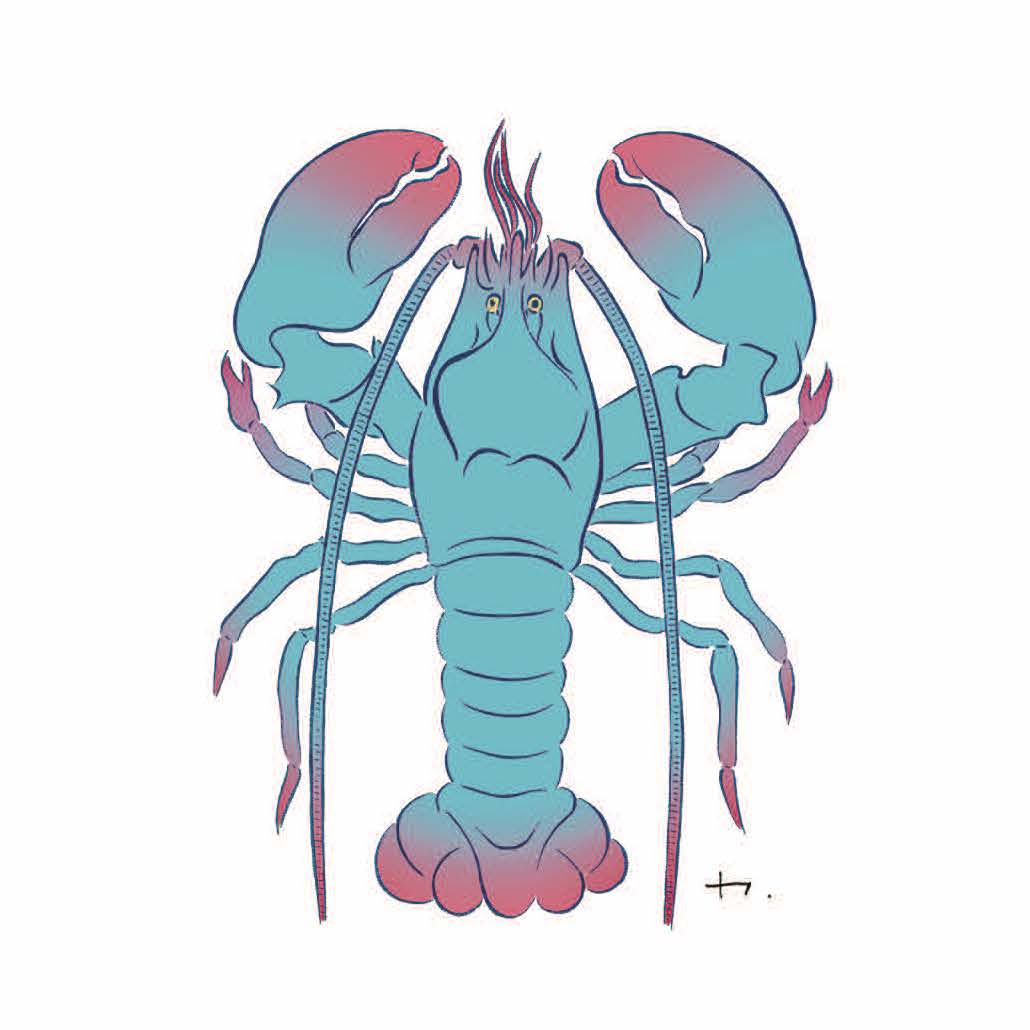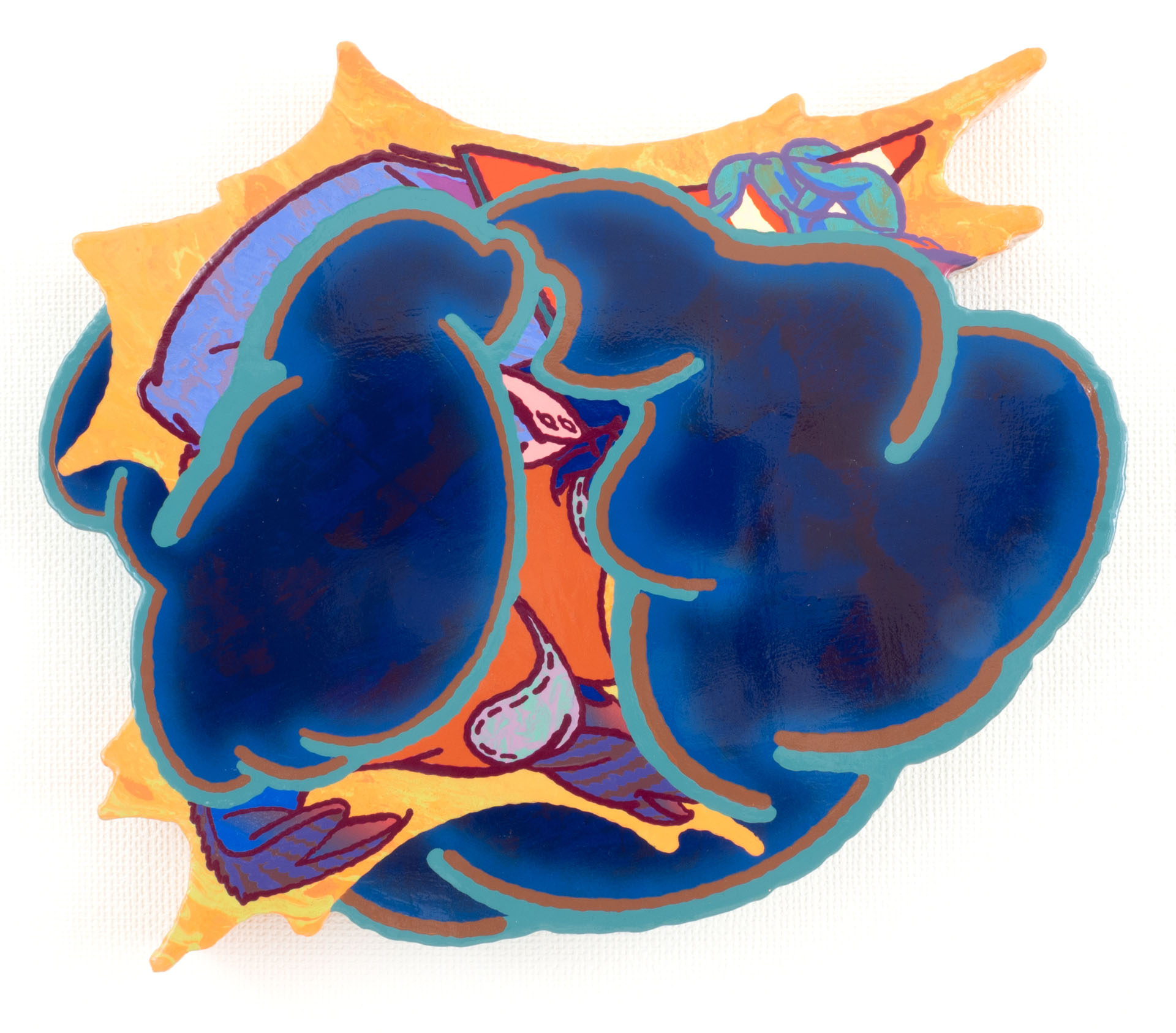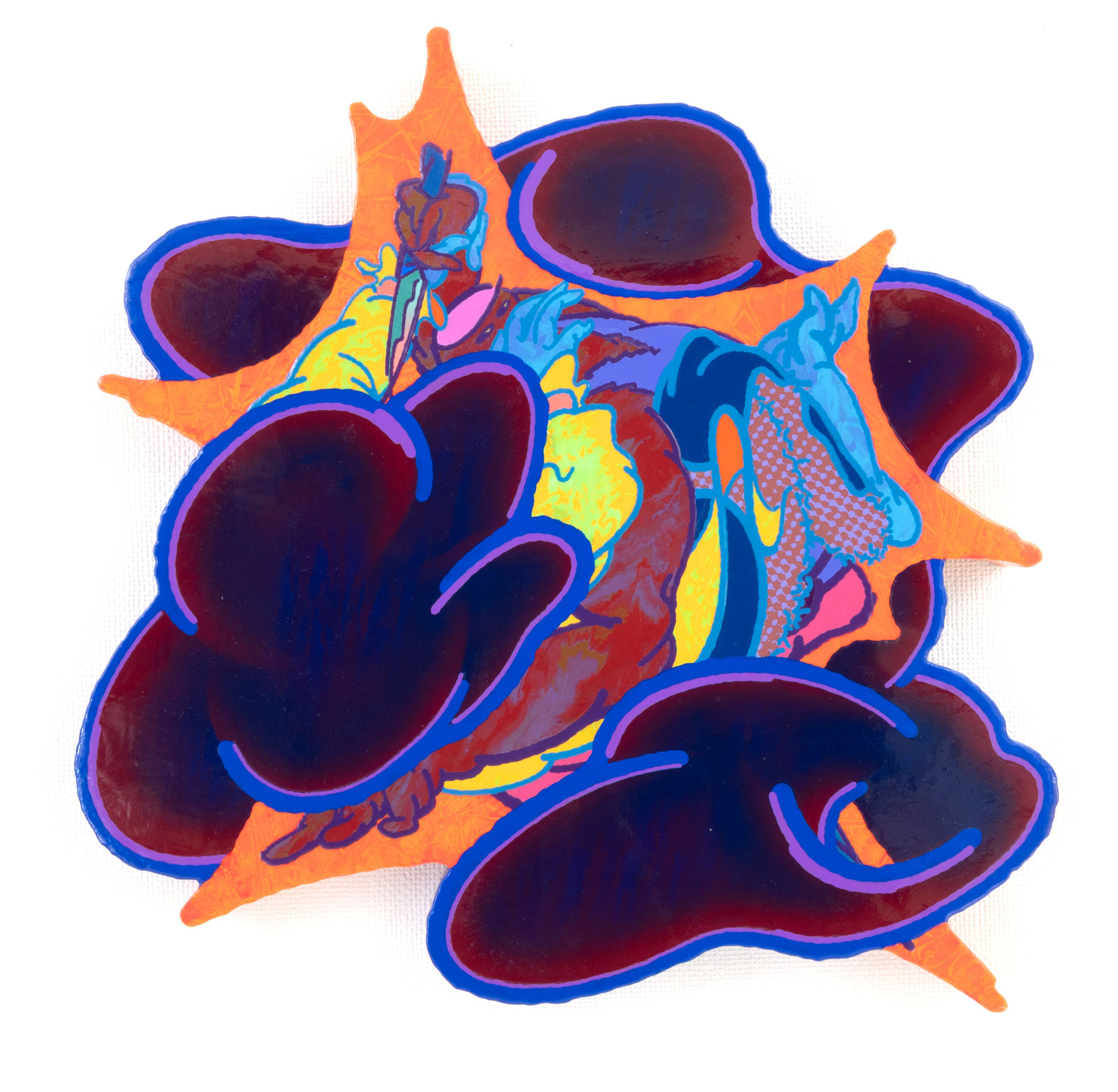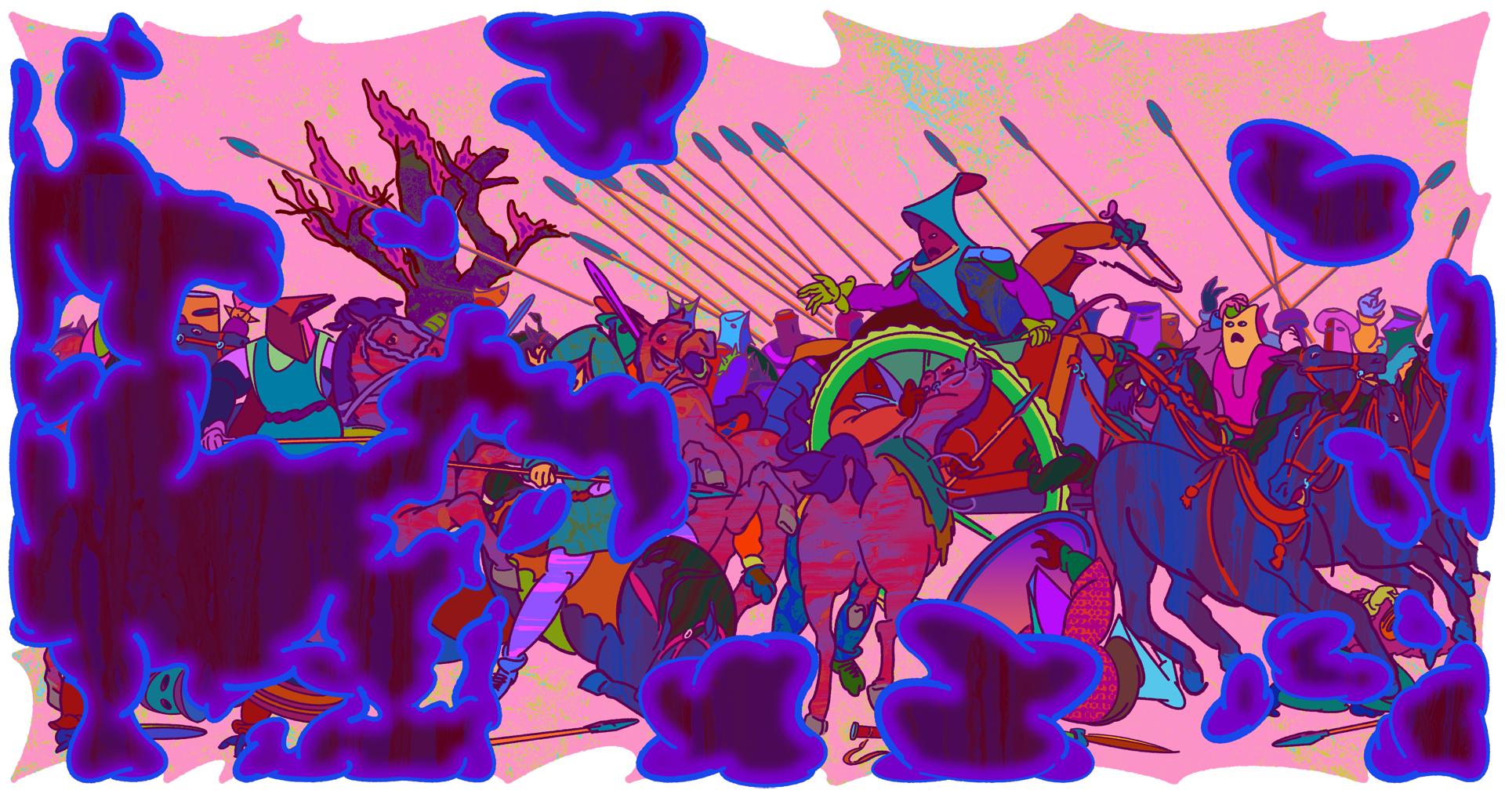Classics are cutting edge
When he was a high school student, Yasumichi Ichibayashi aspired to be a manga artist, taking his work to publishers. He aimed to go to art school to improve his drawing skills, and since the art school he attended happened to specialize in Japanese painting, he decided to pursue Japanese painting. He majored in Japanese painting at Kyoto Seika University.
In Kyoto, where I was exposed to traditional art on a daily basis, I was enthusiastic about creating Japanese paintings after graduating from university, but I felt limited by the fact that "Japanese paintings take so long to complete, and even though I'm full of ideas, I can't create what I want to create." Images that could not be contained on the support rose up, and my desire to express myself beyond the flat surface grew, and I arrived at my current production style using acrylic paints and three-dimensional panels.
While moving away from the subject matter and materials unique to Japanese painting, Ichibayashi uses traditional techniques as a base, incorporating metropolitan-style colors and digital graphic compositions. He uses modern materials such as saran wrap, masking tape, and packing material, and images collected from the internet as motifs. Video games are a key motif in his work.
"Artworks that remain as classics today must have depicted the cutting edge of their time. Not just the subject matter, but the techniques used as well. Works that tell the story of the era in which you were born and raised can become classics. In my case, that's video games."
He says that video games that he has played since he was a child shape the times, and he incorporates what he feels from the game's storyline, the scenery he sees through the music, and the worldview of the game into his work. Ichibayashi's work, which uses purple and blue as its main colors, is reminiscent of ukiyo-e in that it expresses in a catchy way the universe as seen by people living in that era, and in particular "ai-zuri."
The hidden truth
"Ancient murals and ceramics that depict events and life at the time not only weather over the years, but some have also been intentionally erased by people who were still alive. When part of the material that helps us understand past events is missing, no one can see the whole picture. This stimulates the imagination of the viewer, and all kinds of noise is born."
The work "hidden things", which is also the title of this exhibition, is a homage to the "Mosaic of Alexander the Great", which is considered one of the greatest masterpieces of mosaic. The masterpiece, which began restoration for the first time in about 100 years in 2021 and is still being examined by many researchers, has large areas of peeling on the screen. Based on the concept that there may be hidden facts here that overturn historical awareness and even the values of paintings, the theme of the work is the ambiguity of history and the uncertainty of humanity.
"In a world where the population continues to grow, where people of all races and religions are unsettled and the noise is increasing, it is becoming more difficult to get accurate information, including news. This is making people feel frustrated every day."
Ambiguous Affirmation
Living in uncertain times and with our identity fluctuating, we tend to seek a single, definite answer. However, it is human nature to be confused and unable to find one.
Drawn with clear colors and dot patterns against a smoky, cloud-like background, Ichibayashi's work comically depicts situations where we don't know what someone is fighting against or what is happening, and a cutting-edge, classic human figure emerges.
The works on display this time were created using the "Shop Bot," a tool that processes wood based on digital data, and transformed panels. From two-dimensional to three-dimensional works. "Right now I'm more interested in the shape than the content of what I draw," says Ichibayashi. The theme of the exhibition and the artist's true intentions are hidden, and noise is born.








